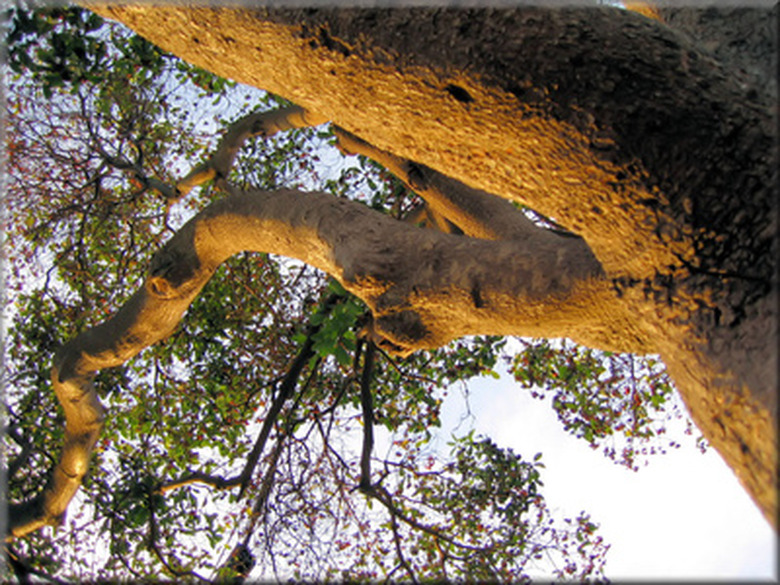Pecan Trees & Trunk Disease
Pecan trees are native to North America, and they can be found growing in states from Illinois to Texas. This tree grows best in climates that have a long and warm growing season such as Louisiana, Florida and Texas. A mature pecan tree will reach heights of 100 to 150 feet. Nuts are produced by cross-pollination. Pecan trees are susceptible to wood or heart rots, and hypoxylon canker. Both are diseases that attack the trunk of the tree.
Heart Rot
Heart rot destroys the pecan tree's cellulose, hemicellulose and lignin (its internal structure). Since the decay takes place under the bark, it can go undetected. However, in most cases, the rot produces fruiting bodies or "conks," which are on the external portion of the bark (a sign of the disease). It can also be detected through an open cavity, or if part of the bark is removed–exposing the internal damage or presence of heart rot. This breakdown of the tree's internal structure makes it very unstable and dangerous as it can easily be blown over in a storm.
- Pecan trees are native to North America, and they can be found growing in states from Illinois to Texas.
- However, in most cases, the rot produces fruiting bodies or "conks," which are on the external portion of the bark (a sign of the disease).
Wood Rot Fungi
Wood rot fungi can be divided into three groups: white rots, brown rots, and soft rots. They are identifiable by their color, shape, and the formation of their fruiting bodies that appear on the exterior of the tree. Conks or brackets are found in several locations: at wound sites on the bark, by branch scars and by the root crown.
Oyster Mushroom
Oyster mushroom, or Pleurotus ostreatus, is a fungus that attacks the pecan tree as well as other deciduous trees. It belongs to the white rot as it causes a white, flaky rot. The tree becomes infected when the fungi enter an open wound–large wounds will lead to severe rotting. The fungus is spread by airborne spores and produces a cluster of shelf-like mushrooms or oyster mushrooms.
- Wood rot fungi can be divided into three groups: white rots, brown rots, and soft rots.
- Oyster mushroom, or Pleurotus ostreatus, is a fungus that attacks the pecan tree as well as other deciduous trees.
Controlling Oyster Mushroom
Heart rots, which include oyster mushroom, are found in older trees. Controlling or managing the disease is quite difficult in older trees due to their size. To avoid the possibility of heart rot, do not remove any large limbs as this creates an entryway for the fungal spores. Younger trees should be maintained by correct pruning, adequate watering and by following a regular fertilization program to avoid oyster mushroom.
Hypoxylon Canker
Hypoxylon autropunctatum is the fungus that causes hypoxylon canker. Symptoms of this disease are loss of bark and formation of a reddish powdery substance under the bark of the tree. Infected areas will develop a dark (brown to black) crust. These areas of the tree will die. There isn't a treatment for hypoxylon canker. It usually attacks a stressed tree so the way to avoid this disease is to maintain a healthy tree. Avoid over-watering, wounds should be avoided, but if they do occur, they should be painted over. It is also important that the soil should not be compacted around the base of the tree, and to follow a regular fertilization program.
- Heart rots, which include oyster mushroom, are found in older trees.
- To avoid the possibility of heart rot, do not remove any large limbs as this creates an entryway for the fungal spores.
